Abstract
1. Weights were lifted by flexing the distal joints of the anaesthetized thumbs. A weight-matching task was used to determine the perceived heaviness of a reference weight during control estimates when it was freely lifted, and during experimental estimates when the weight was not lifted, but simply 'gave way' when a reference isometric tension of the same magnitude was attained. 2. Limitation of the afferent input, by anaesthesia of the digit and by replacing lifting with a sudden unloading, did not grossly impair the judgement of heaviness. The sense of heaviness increased when the muscles became fatigued. 3. These results suggest that the central nervous system can interpret the voluntary motor command as an index of heaviness even when provided with only a crude peripheral signal that the weight has been moved.
Full text
PDF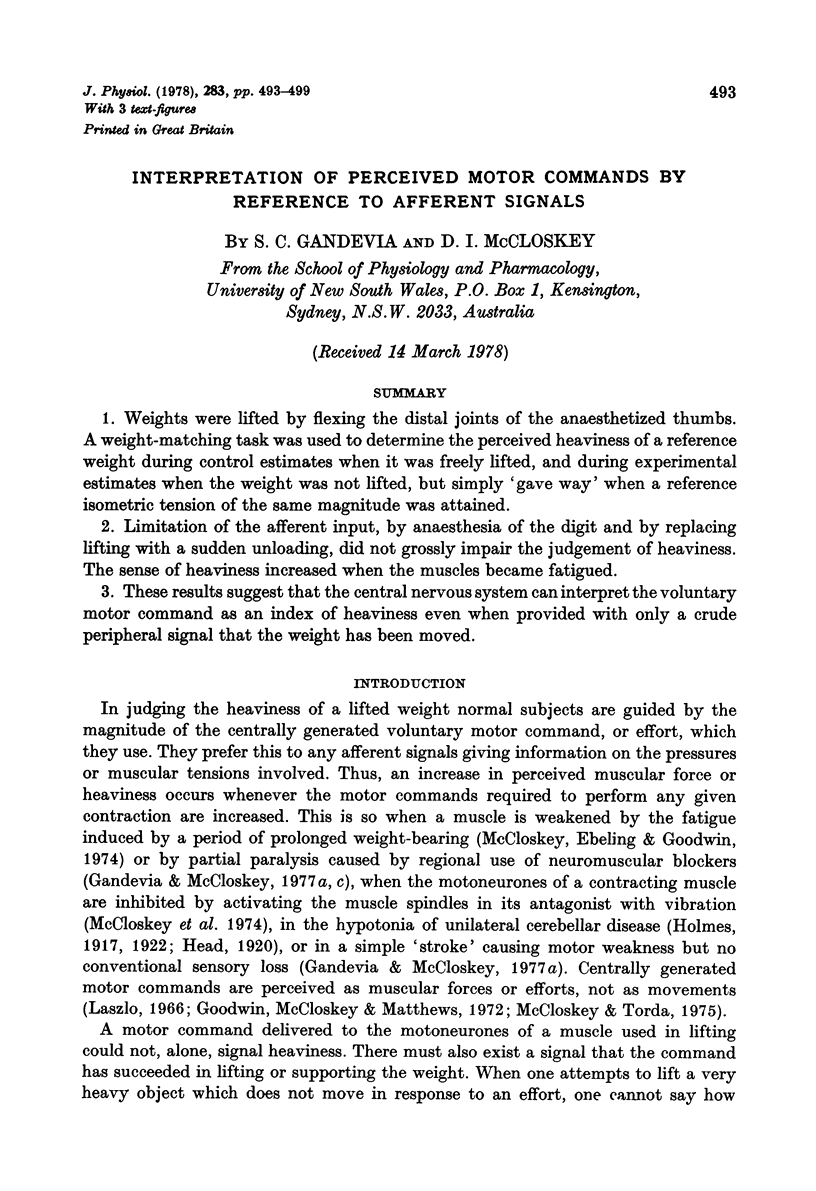
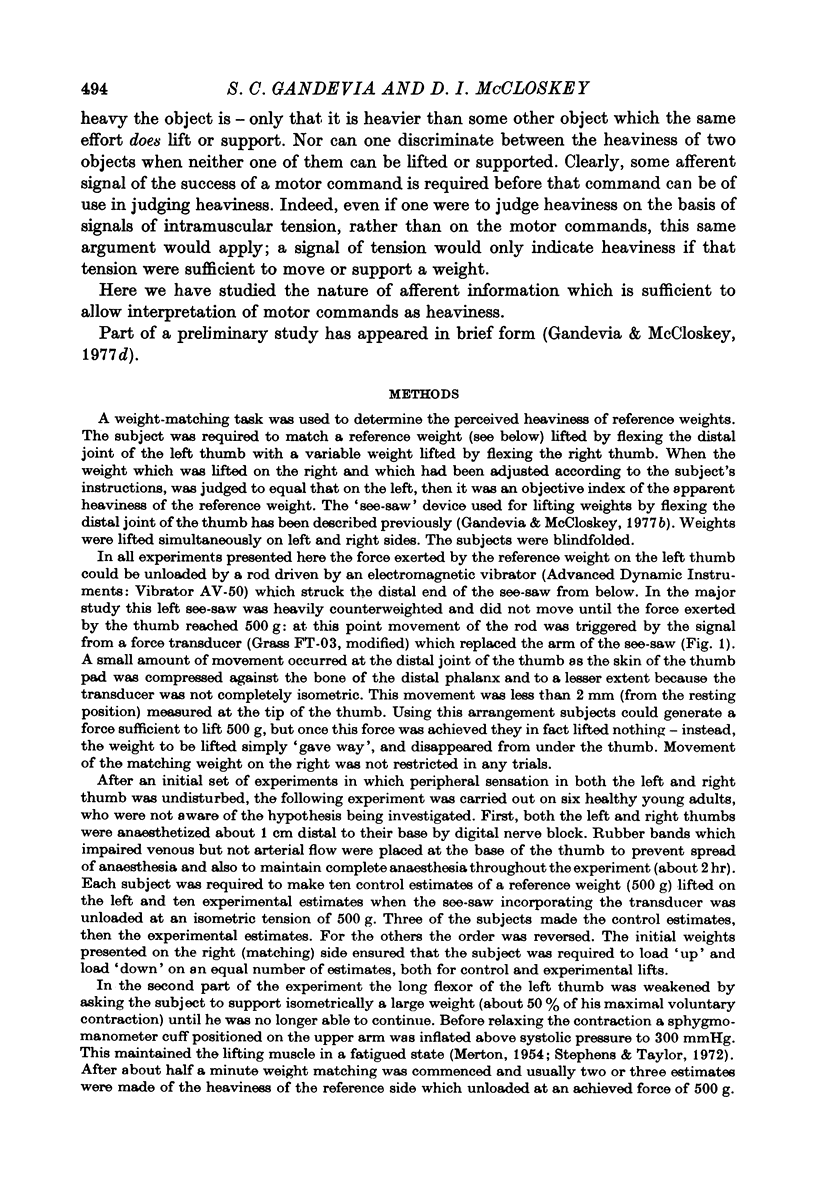
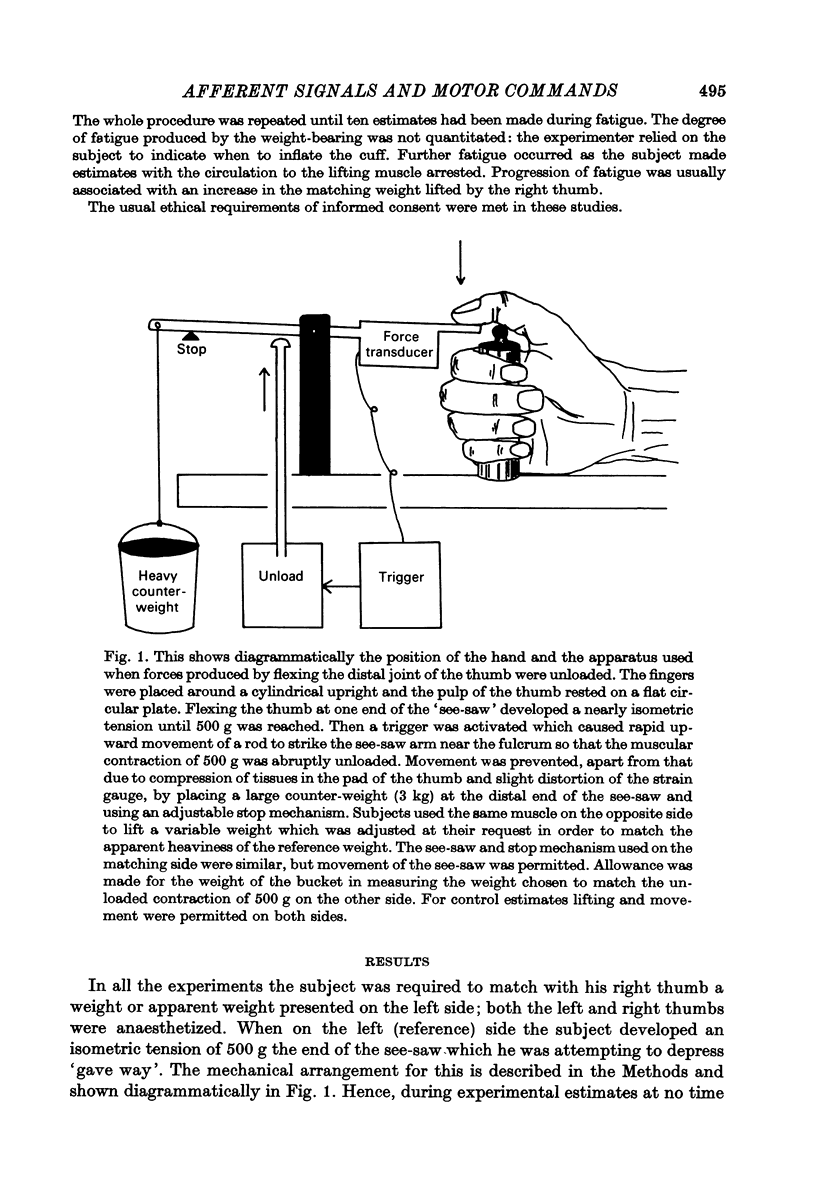
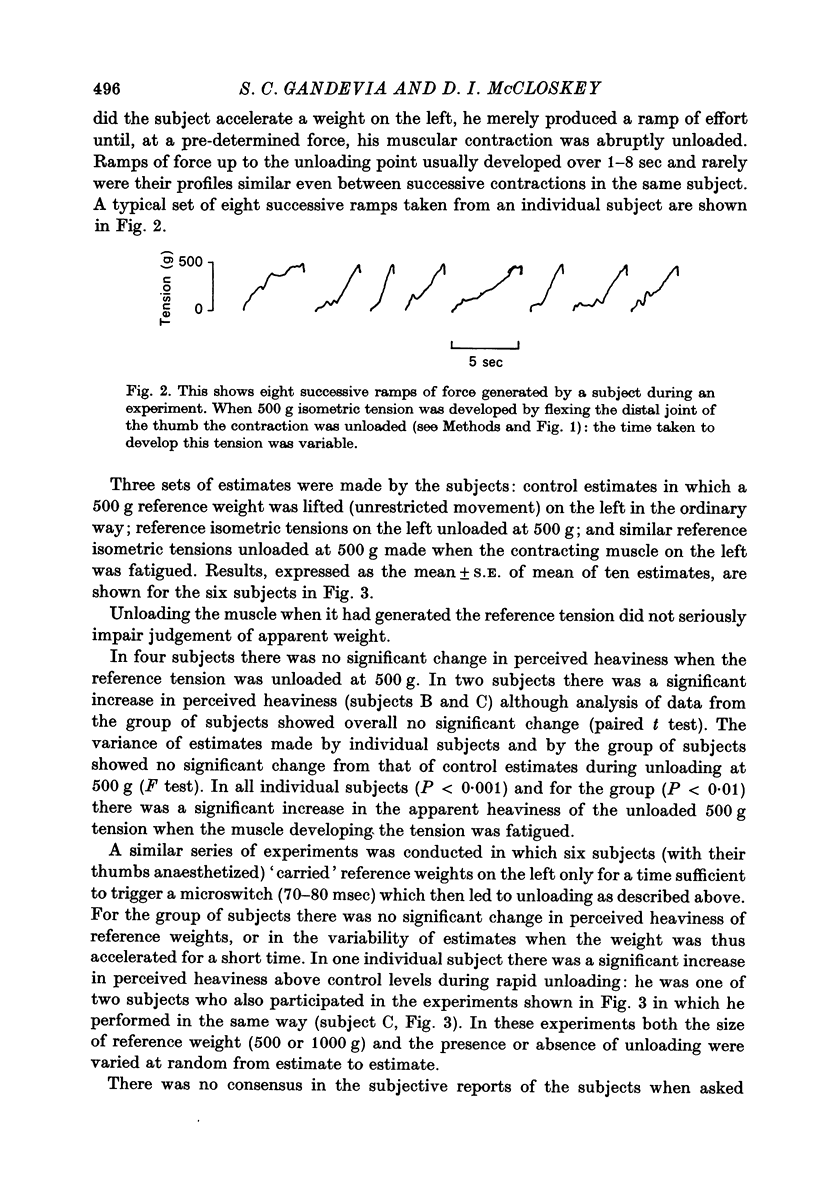
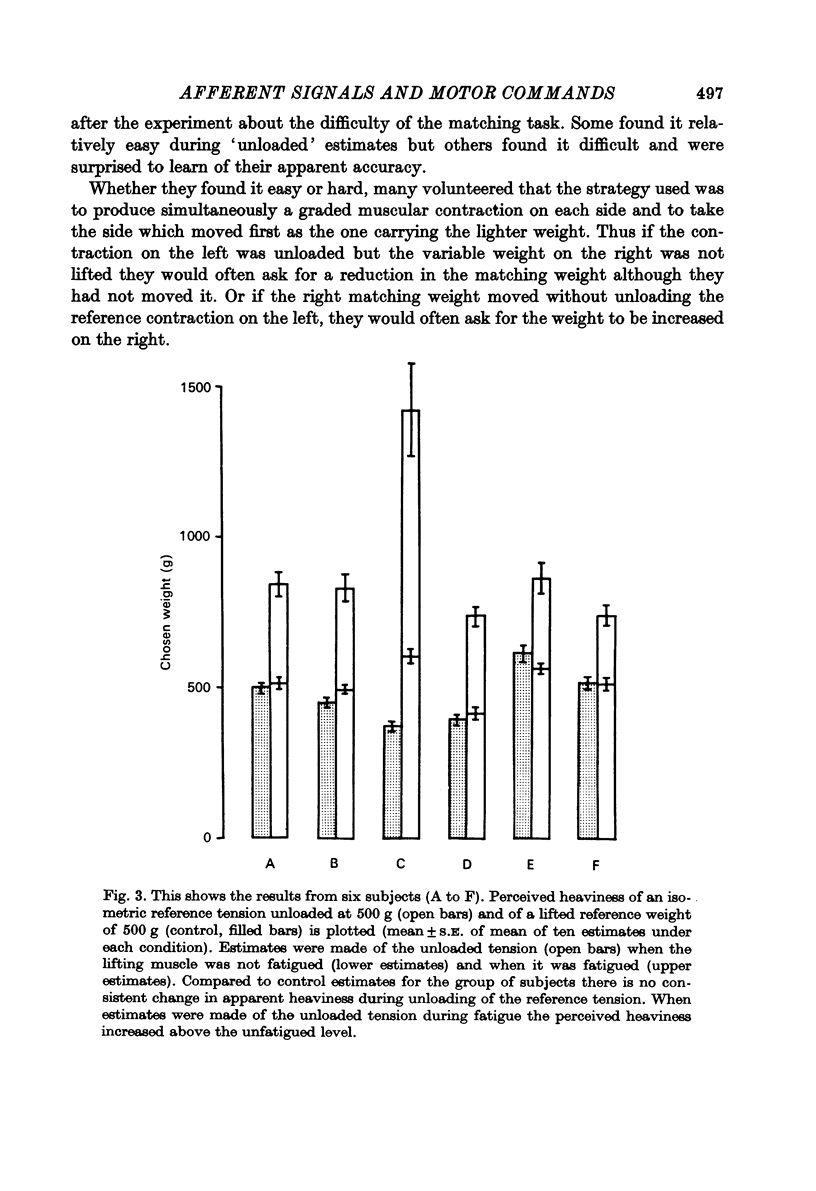
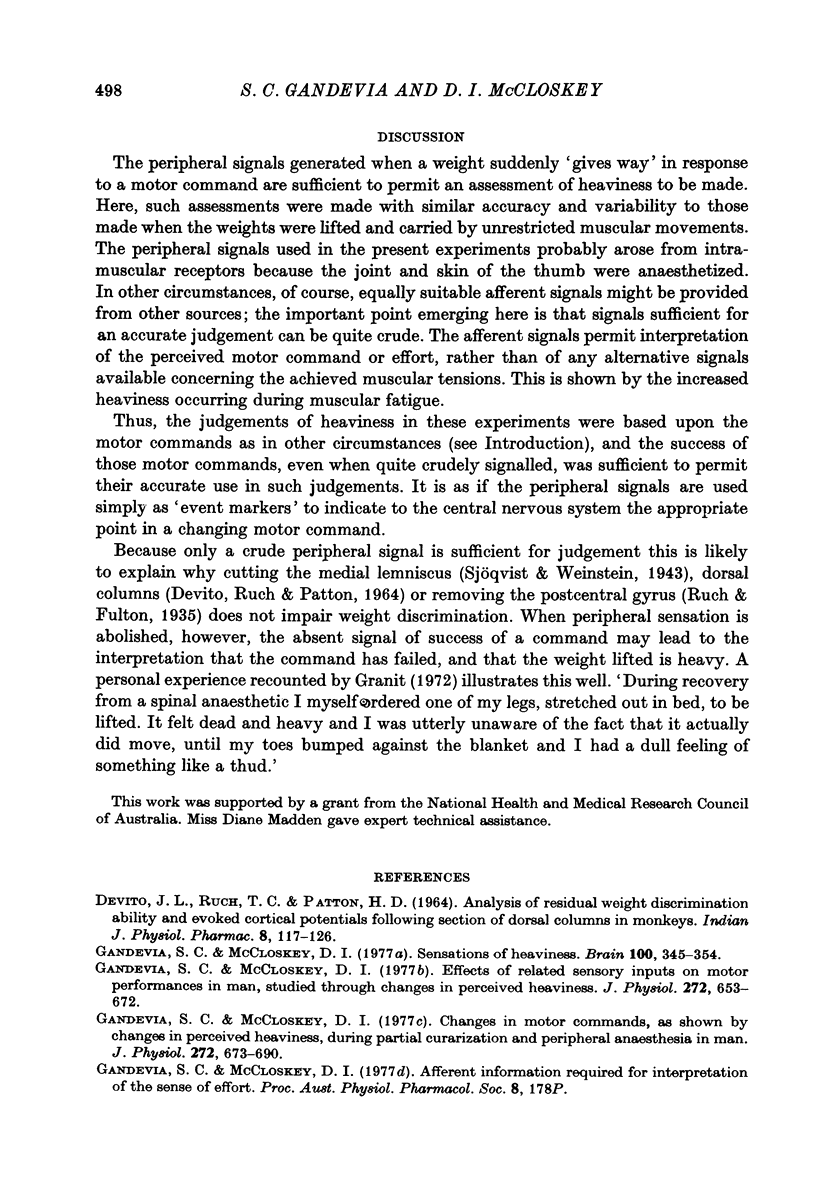
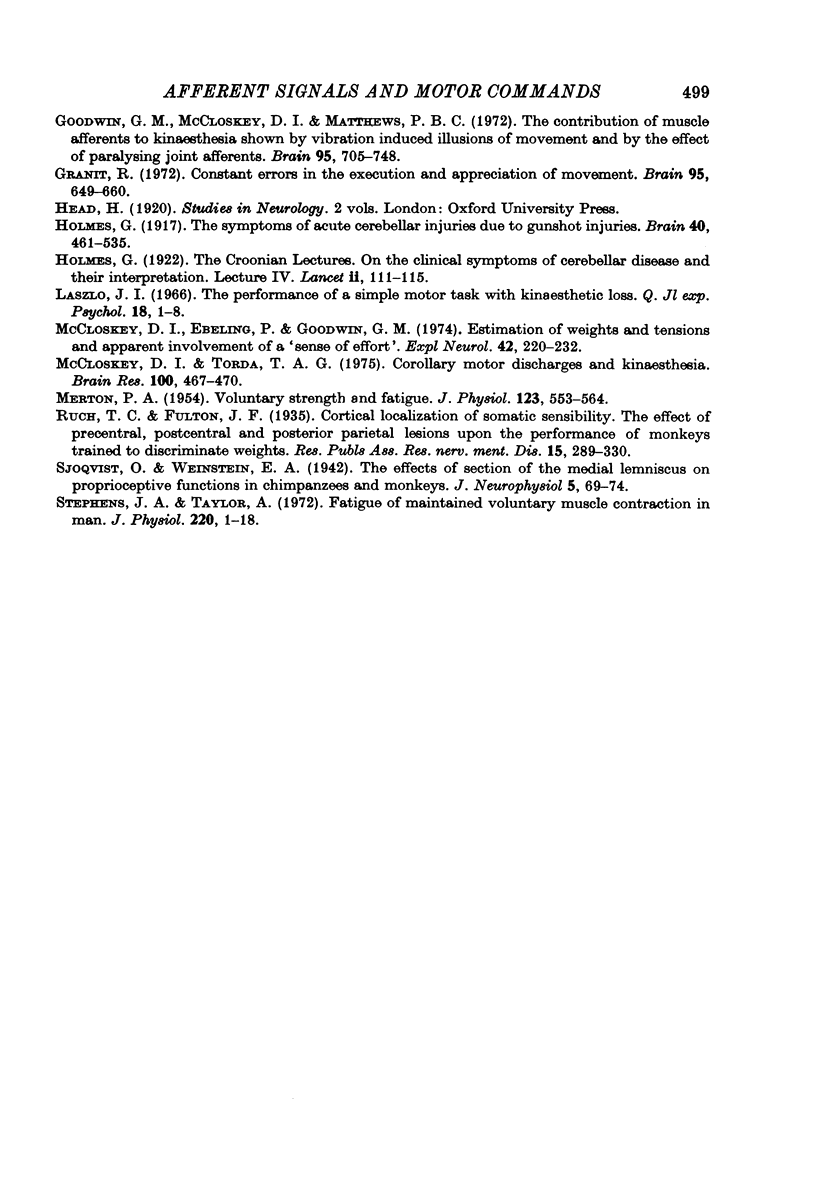
Selected References
These references are in PubMed. This may not be the complete list of references from this article.
- Devito J. L., Ruch T. C., Patton H. D. Analysis of residual weight discriminatory ability and evoked cortical potentials following section of dorsal columns in monkeys. Indian J Physiol Pharmacol. 1964 Jul;8(3):117–126. [PubMed] [Google Scholar]
- Gandevia S. C., McCloskey D. I. Changes in motor commands, as shown by changes in perceived heaviness, during partial curarization and peripheral anaesthesia in man. J Physiol. 1977 Nov;272(3):673–689. doi: 10.1113/jphysiol.1977.sp012066. [DOI] [PMC free article] [PubMed] [Google Scholar]
- Gandevia S. C., McCloskey D. I. Effects of related sensory inputs on motor performances in man studied through changes in perceived heaviness. J Physiol. 1977 Nov;272(3):653–672. doi: 10.1113/jphysiol.1977.sp012065. [DOI] [PMC free article] [PubMed] [Google Scholar]
- Gandevia S. C., McCloskey D. I. Sensations of heaviness. Brain. 1977 Jun;100(2):345–354. doi: 10.1093/brain/100.2.345. [DOI] [PubMed] [Google Scholar]
- Goodwin G. M., McCloskey D. I., Matthews P. B. The contribution of muscle afferents to kinaesthesia shown by vibration induced illusions of movement and by the effects of paralysing joint afferents. Brain. 1972;95(4):705–748. doi: 10.1093/brain/95.4.705. [DOI] [PubMed] [Google Scholar]
- MERTON P. A. Voluntary strength and fatigue. J Physiol. 1954 Mar 29;123(3):553–564. doi: 10.1113/jphysiol.1954.sp005070. [DOI] [PMC free article] [PubMed] [Google Scholar]
- McCloskey D. I., Ebeling P., Goodwin G. M. Estimation of weights and tensions and apparent involvement of a "sense of effort". Exp Neurol. 1974 Jan;42(1):220–232. doi: 10.1016/0014-4886(74)90019-3. [DOI] [PubMed] [Google Scholar]
- McCloskey D. I., Torda T. A. Corollary motor discharges and kinaesthesia. Brain Res. 1975 Dec 19;100(2):467–470. doi: 10.1016/0006-8993(75)90503-x. [DOI] [PubMed] [Google Scholar]
- Stephens J. A., Taylor A. Fatigue of maintained voluntary muscle contraction in man. J Physiol. 1972 Jan;220(1):1–18. doi: 10.1113/jphysiol.1972.sp009691. [DOI] [PMC free article] [PubMed] [Google Scholar]


